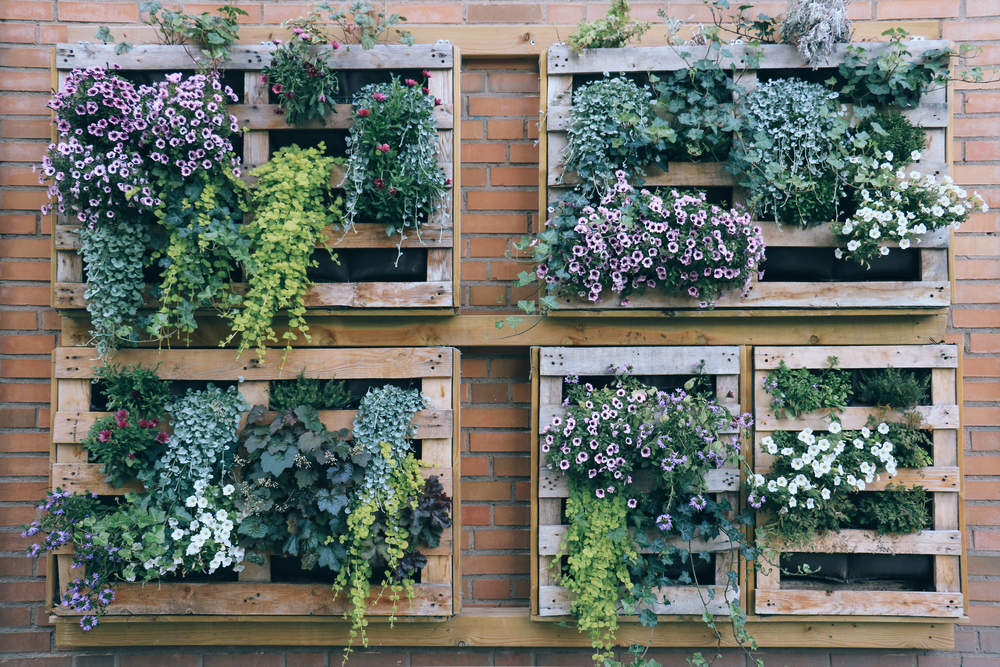Rooting for honey
Cut a short stem of a plant and dip into a container of honey. Insert the stem into some cinder, sand or even a potato. Pluck any leaves and flowers from the stem. The honey acts as a hormone of sorts and stimulates roots to grow and ensures a high rate of success. Soon a healthy plant will sprout out.
Pro tip: It is more effective to dip the stem into honey and not smear honey on the stem as your fingers may not be clean.
Bottling plant
Remove the cap of a plastic bottle and insert a knife or scissors to cut small holes around its body.
Pluck leaves of a succulent and insert into these holes such that they are partially inside the bottle and partially out. Fill the bottle with water.
In four weeks the succulents will sprout roots on the inside of the bottle. Pull them out and plant them in the soil to grow into new plants.
Pro tip: Money plants also grow easily out of water bottles. Cut a stem, dip it in the bottle and watch it grow.
Bug attack
Are insects constantly hovering around your plants? Pour detergent-water on the leaves and flies will bother the plants no more. Flies and insects do not like the smell of detergent and fear they will get stuck on the leaves if they sit on the solution.
Pro tip: Use detergent and not soap as it will work up more lather and be cheaper. Use a watering can to pour the solution and not a spray bottle. Spray bottles disseminate less liquid and are used when the solution is expensive or when the lower parts of leaves are to be watered too.
Dry soil
Does the heat and humidity in summer leave your soil dry no matter how often you water it? Scatter small pieces of wood on the soil and water over it as well as under it. The wood absorbs the water and retains it for much longer, leaving the area underneath moist too.
Pro tip: You can use rice husk (toosh) or charcoal as a substitute for wood. Charcoal has potassium that makes for great plant food.
Rotting roots
Are the roots of your plants rotting? Here’s what to do next time.
Make a solution of hydrogen peroxide and water in the ratio of 1:3. You’ll find the chemical at medicine shops and big nurseries. Dip roots of your new plant in this red coloured solution before setting into the soil. This is especially good for Orchids.
In fact, before placing a plant into a pot, wash the soil with water inside the pot. After a day the water will float up. Drain the water and spread out the soil to dry in the sun.
Pro tip: Be careful not to put your wet hand into the container of hydrogen peroxide. It will spoil the chemical.
Rice formula
The phyan produced while cooking rice makes a great plant nutrient. But the phyan is thick and if poured in this state, will form a coating on the soil and prevent even water from seeping through. So mix this with water and then pour.
Pro tip: Never pour phyan while it’s hot. Always cool it down before pouring.
Fish and eggs
Break egg shells into tiny pieces after use and sprinkle on the soil. It’s more effective to use eggs that have not been boiled as that drains out much of the nutrients.
You can also spread out fish scales as well as the discarded parts of the fish on the soil for nutrition. But dip them in water once before laying out.
Pro tip: The fish scales will attract crows so try to keep a net on top of the plant.

Vertical garden
No space to grow plants? Grow a vertical garden and that too, without shelling out big bucks.
Make it out of a wall-hanging pocket holder. Usually made of polyester, these are good for storing shoes or household items and have up to 24 cosy pockets. To convert each pocket into a mini flower pot, fill them with pebbles and soil. Sow a seed now and soon you’ll have plants sprouting out of them.
When the plants grow big, you’ll have to transfer them elsewhere.
Pro tip: Expert gardeners would know exactly how much to water the pockets but beginners could make holes at the bottom of the pockets for excess water to drain. This might dirty the floor so consider carefully where you want to hang the garden.
Inputs from S.K. Maiti










